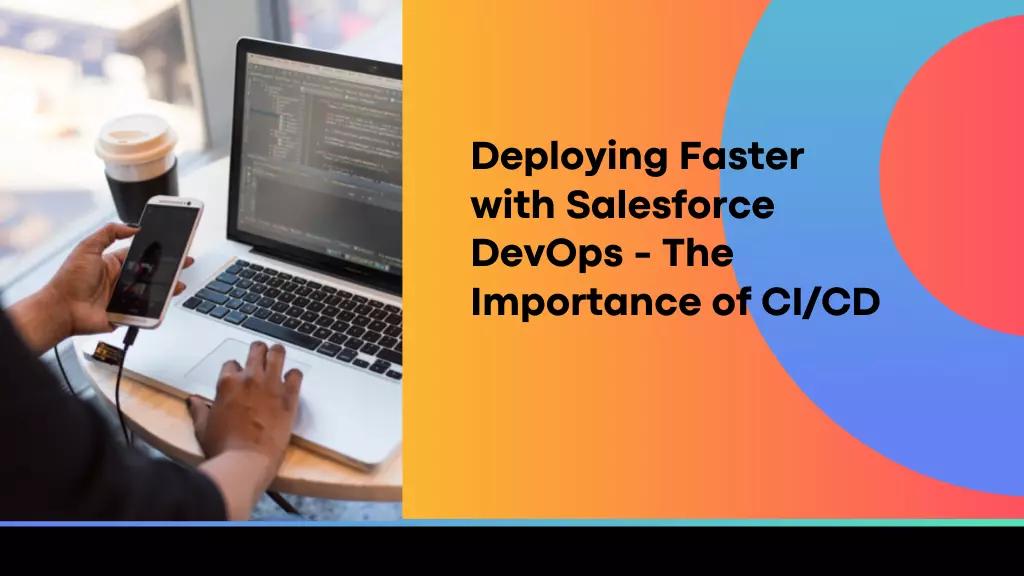After the emergence of the CRM tools over the last couple of decades, Salesforce had a very long journey to become the most popular and cloud platform. The enterprise solutions by Salesforce are continuously evolving and rapidly growing.
Salesforce offers CRM now and various solutions for marketing, finance, HR, business intelligence, customer service, and so on. Salesforce is continuously advancing step by step in its aim to become a one-stop-shop for enterprises by covering the entire gamut of business management.
Deployment with Salesforce DevOps
Technology has become more advanced, and organizations are more reliant on Salesforce for quicker development and frequent releases of applications. Approaches like continuous integration and continuous deployment pipeline, and DevOps have become very popular nowadays, but this has been slower to reach to Salesforce world for a long time.
This is partly because Salesforce was focusing more on their niche technologies for long than trying to diversity. This article will discuss how we can implement the DevOps approach into the existing software development and delivery process to speed it up.
What continuous integration and continuous development can bring on to the table?
CI/CD pipeline will help organizations get empowered to deliver changes quicker and more frequently. As you can see, the market is moving faster than ever, and the customers want new releases and updates in shorter periods.
A release frequency has to be made once or twice a week to even daily in light of the changing requirements. Using the traditional methods to roll out new releases is never possible.
On the other hand, deploying a CI/CD pipeline will help ensure a smoother process, which enables a more reliable rollout of changes, whether big or small. Organizations can now use CI/CD tools for automating incremental deployments.
Adopting DevOps
The fundamental thing you need to understand while adopting DevOps is that it is not a standalone tool but a distinctive approach to deliver applications. DevOps will help break the conventional silos between developers, operations, and stakeholders and promote better collaboration and communication among these teams.
This can be seen as a continuous cycle where different teams will come together and deliver the releases faster and easier. Organizations with a larger development team may also leverage DevOps to speed up their build, test, deployment, and release cycle.
Enterprises may also inculcate the DevOps practices by making their teams aware of the concept behind it and eventually integrate all these practices into their workloads.
Once you become confident, other organizational leaders can also scale their CI/CD to make releases two to three times a week or even daily based on the requirements. Overall, the maturity of DevOps may depend on the age and size of the company and how open it is to the changes in technology.
Challenges with Salesforce DevOps
As we can see, Salesforce is a cloud provider with a multi-tenant approach that can be exclusively used for handling the workloads of different types of organizations. The businesses which look to keep a low profile may go for the native Salesforce approach.
However, it is not ideal for the fast delivery environment as you may be bound to the limitations of generic Salesforce with this approach. Another basic option is to stick together various third-party tools to ensure your customized CI/CD pipeline.
This approach will let you integrate the tools you need to get an efficient solution. The problem here is that this approach might take more time to implement as there are many tools you have to use in the ecosystem. Another big challenge is the cost involved when you have an existing ecosystem that uses too many tools from various vendors.
There can always be a middle-ground solution where you may be able to use your Salesforce cloud with possible integrations and other salesforce DevOps tools to promote continuous delivery.
Purpose-built solutions
This approach is also a combination of the best parts of every other solution. The idea here is to combine the out-of-the-box Salesforce functionality with CI/CD tools to leverage releases and enhance performance. CI/CD platform is tailor-made for Salesforce, but the limitations of Salesforce do not restrict it. An ideal CI/CD tool may have the major features as below:
Metadata awareness – This method is crucial to any given data as it may hold information about the connection between different types of data. Metadata will help you to control the code and all related artifacts better. Once the data is categorized and organized well, you can set up rules and policies and then do automation based on metadata.
Fast delivery - Even though the requirements may vary in different interfaces, an ideal continuous integration and continuous delivery solution may promote a faster delivery by providing end-to-end automation. Automation is central to the concept of CI/CD and DevOps. It will eliminate all manual steps and the ensuing errors in it by speeding up things and enforcing better quality at a scale.
Making your CI/CD future proof- Technology may change faster, and the CI/CD practices you follow may be able to evolve. It is also convenient to look for a unified CI/CD platform that works on multi-cloud rather than disparate tools.
Release management automation- A solid CI/CD solution may also deploy faster to integrate with Salesforce and manage the entire development pipeline seamlessly.
The primary goal of maintaining a CI/CD practice is to ensure a better developer experience, and it should also lead to an improved user experience. There are many ways through which you can implement CI/CD for Salesforce.
Salesforce itself offers integration with third-party tools like GitHub and Travis CI etc. While all these may work, it can also pressure building and maintaining the pipeline on you. This may not be ideal as it will eventually distract you from the core product.
By properly taking care of all these, you will significantly increase all the odds of successful adoption of the CI/CD approach and break the silos, which may have slowed down your delivery process.

